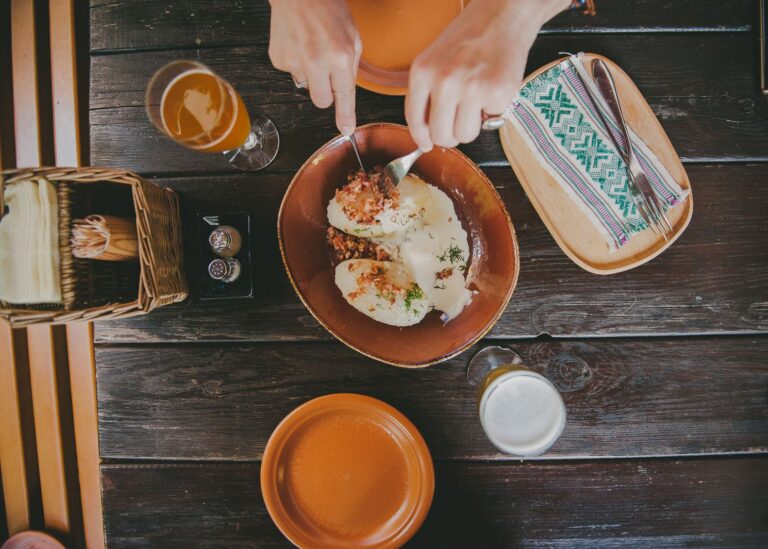Introduction: The Basics of Lithuanian Cuisine
Lithuanian cuisine is steeped in the country’s rich history and culture. The cuisine is hearty and rustic, with dishes prepared using locally sourced ingredients. Lithuanian cuisine is often associated with meat dishes, particularly pork, beef, and game, but the cuisine also includes a wide range of vegetables, grains, and dairy products. The traditional methods of cooking and preserving food have been passed down through generations, ensuring that Lithuanian cuisine remains an important part of the country’s cultural heritage.
Traditional Lithuanian Foods and Ingredients
Lithuanian cuisine is renowned for its hearty and filling dishes, which often feature meat and potatoes. The most famous Lithuanian dish is cepelinai, or zeppelins, which are large potato dumplings stuffed with meat, curd, or mushrooms. Other popular meat dishes include kugelis, a potato pudding with bacon, and skilandis, a smoked meat sausage. Lithuanian cuisine also features a range of dairy products, including sour cream, cheese, and curd. Rye bread is a staple in Lithuanian cuisine, and is often served with soups and stews.
Religious and Cultural Dietary Restrictions
Lithuania has a predominantly Catholic population, and as such, many Lithuanians observe religious dietary restrictions. During Lent, for example, many Lithuanians refrain from eating meat. The country’s Jewish population also observes kosher dietary laws, which prohibit the consumption of certain animals and require strict preparation methods. Additionally, many Lithuanians avoid pork for cultural reasons, due to its association with the Soviet era.
Vegetarian and Vegan Options in Lithuanian Cuisine
Vegetarian and vegan options are becoming more widely available in Lithuania, particularly in the country’s larger cities. Many traditional Lithuanian dishes can be easily adapted to suit vegetarian or vegan dietary requirements, such as replacing meat with mushrooms or tofu. Additionally, Lithuanian cuisine features a range of vegetable-based dishes, such as beetroot soup and vegetable stew.
Gluten-Free and Allergy Considerations
Gluten-free options are becoming more widely available in Lithuania, particularly in restaurants and cafes catering to international visitors. However, it is still important for those with gluten allergies or sensitivities to exercise caution when eating in Lithuania, as many traditional Lithuanian dishes contain wheat or rye flour. Those with other allergies or dietary restrictions should also exercise caution and communicate their requirements clearly when dining out.
Health Benefits and Nutritional Value of Lithuanian Cuisine
Lithuanian cuisine is known for its hearty and filling dishes, which are often prepared using simple and natural ingredients. The cuisine is rich in protein, fiber, and essential vitamins and minerals. Many traditional Lithuanian dishes feature vegetables, such as beets and cabbage, which are high in antioxidants and anti-inflammatory compounds. However, as many Lithuanian dishes are high in fat and calories, it is important to enjoy them in moderation as part of a balanced diet.

